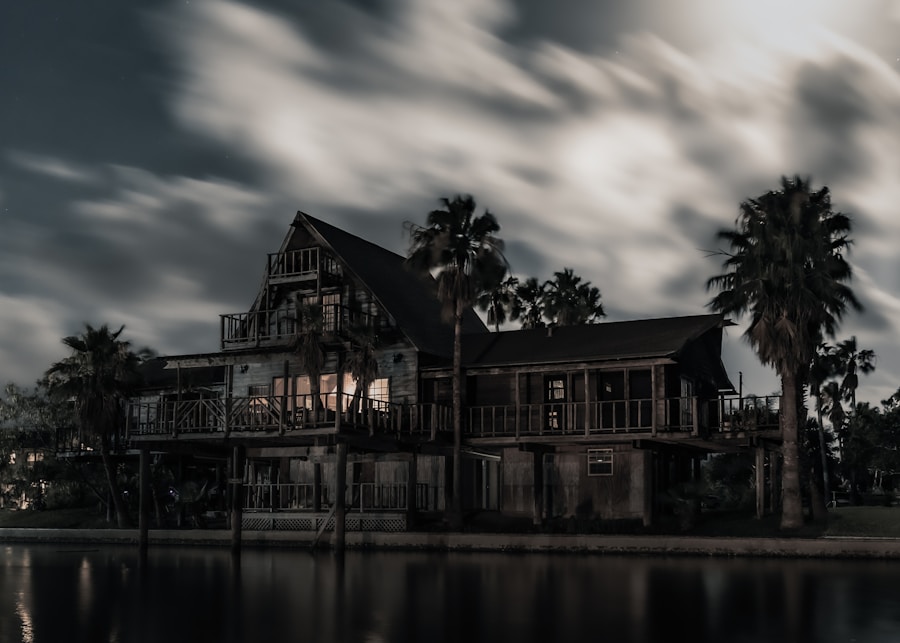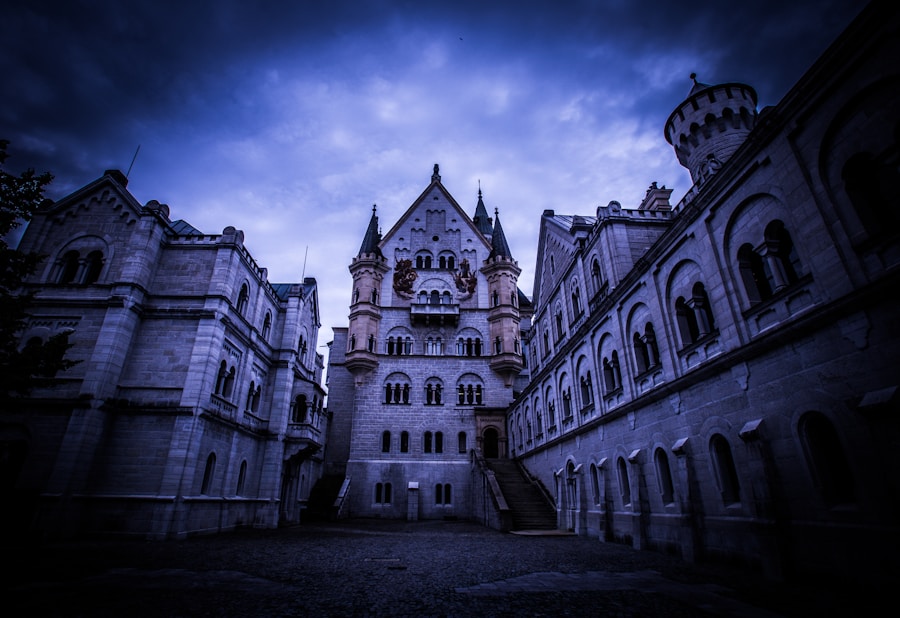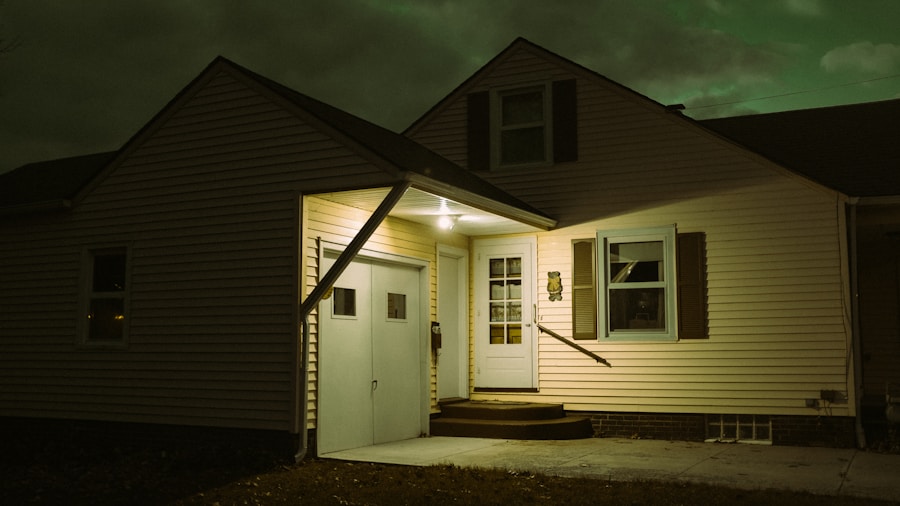In recent years, sensor technology has emerged as a transformative force across various industries, revolutionizing how we interact with our environments. From smart homes to healthcare, sensors have become integral in enhancing efficiency, safety, and user experience.
By integrating sensors into haunted house designs, we can elevate the traditional scare tactics to new heights, engaging visitors in ways that were previously unimaginable. The application of sensor technology in entertainment venues, particularly haunted houses, is a fascinating intersection of art and science. It allows us to create environments that respond dynamically to the presence and actions of visitors.
As we explore the evolution of haunted houses and the role of sensor technology within them, we will uncover how these innovations are reshaping the landscape of fear and fun.
Key Takeaways
- Sensor technology has revolutionized the way haunted houses are designed and experienced.
- Haunted houses have evolved from simple jump scares to immersive, interactive experiences.
- Incorporating sensor technology into haunted house design allows for more dynamic and responsive scares.
- Sensor technology enhances the visitor experience by creating a more immersive and interactive environment.
- The use of sensor technology in haunted houses also provides safety and security benefits for both visitors and staff.
The Evolution of Haunted Houses
Haunted houses have a rich history that dates back centuries, evolving from simple ghost stories told around campfires to elaborate attractions designed to thrill and terrify. Initially, these experiences were often rooted in folklore and local legends, relying heavily on storytelling and atmospheric settings to evoke fear. As time progressed, the advent of theatrical techniques and special effects allowed for more sophisticated presentations, transforming haunted houses into popular attractions during Halloween and other festive occasions.
In the late 20th century, we witnessed a significant shift in how haunted houses were conceptualized and executed. The rise of theme parks and commercial haunted attractions introduced a new level of professionalism and creativity. These venues began to incorporate advanced lighting, sound effects, and animatronics to create more immersive experiences.
However, despite these advancements, many haunted houses still relied on traditional scare tactics, often repeating the same formulas year after year. This stagnation prompted a need for innovation, paving the way for the integration of sensor technology into haunted house design.
Incorporating Sensor Technology into Haunted House Design

The incorporation of sensor technology into haunted house design marks a pivotal moment in the evolution of these attractions. By utilizing motion sensors, pressure sensors, and environmental sensors, we can create spaces that react to visitors in real-time. For instance, motion sensors can trigger animatronics or sound effects as guests move through different areas, ensuring that no two experiences are ever the same.
This unpredictability adds an element of surprise that heightens the overall thrill. Moreover, pressure sensors can be strategically placed in floors or walls to detect when someone is nearby, activating hidden scares or illusions that would otherwise remain dormant. This level of interactivity not only enhances the fear factor but also encourages visitors to explore their surroundings more thoroughly.
As we design these haunted environments, we must consider how each sensor can contribute to a cohesive narrative that immerses guests in a world of horror and suspense.
Enhancing the Visitor Experience with Sensor Tech
| Visitor Experience Metrics | 2019 | 2020 | 2021 |
|---|---|---|---|
| Average Visitor Satisfaction | 8.5 | 8.7 | 9.0 |
| Visitor Engagement Time (minutes) | 45 | 50 | 55 |
| Number of Repeat Visitors | 5000 | 5500 | 6000 |
The visitor experience is at the heart of any successful haunted house, and sensor technology plays a crucial role in enhancing this aspect. By creating responsive environments that adapt to individual behaviors, we can foster a sense of agency among guests. For example, using facial recognition technology, we can tailor experiences based on visitors’ reactions—intensifying scares for those who seem unfazed while providing lighter experiences for those who may be more sensitive.
Additionally, sound sensors can capture the ambient noise levels within the attraction, allowing us to adjust audio effects dynamically. If a group is particularly loud or excited, we can amplify certain soundscapes or introduce unexpected elements to maintain an atmosphere of tension. This adaptability ensures that every visit feels unique and personalized, leaving guests with lasting memories that they will want to share with others.
Safety and Security Benefits of Sensor Technology in Haunted Houses
While the primary goal of haunted houses is to entertain and scare visitors, safety and security must also be paramount considerations. Sensor technology offers numerous benefits in this regard, helping us create safer environments for both guests and staff. For instance, emergency exit sensors can monitor crowd movement and ensure that pathways remain clear during peak times.
In case of an emergency, these sensors can trigger alarms or guide guests toward exits efficiently. Moreover, surveillance cameras equipped with motion detection can enhance security measures within the attraction. By monitoring visitor behavior in real-time, we can identify potential issues before they escalate.
This proactive approach not only protects our guests but also ensures that staff members can focus on delivering an exceptional experience without compromising safety.
Creating Interactive and Immersive Environments with Sensors

Dynamic Environments
Imagine walking through a haunted house where walls shift based on your movements or where ghostly apparitions appear only when you approach certain areas. These dynamic environments encourage guests to engage with their surroundings actively, creating a truly unforgettable experience.
Interactive Challenges
We can design puzzles or challenges that require visitors to solve riddles or complete tasks using their smartphones or wearable devices. This gamification aspect not only enhances the thrill but also fosters teamwork among groups as they navigate through the haunted experience together.
A New Level of Immersion
By integrating AR and VR elements with sensor technology, we can create an unparalleled level of immersion, making visitors feel like they are an integral part of the haunted experience. This fusion of technologies has the potential to revolutionize the horror genre, providing a unique and terrifying experience that will leave a lasting impression on all who dare to enter.
Future Trends and Innovations in Haunted House Sensor Technology
As we look toward the future, it is clear that sensor technology will continue to play a pivotal role in shaping the haunted house industry. Emerging trends such as artificial intelligence (AI) integration promise to take visitor interactions to unprecedented levels. AI algorithms can analyze visitor behavior patterns over time, allowing us to refine experiences based on collective data insights.
Additionally, advancements in haptic feedback technology could enable us to create tactile experiences that simulate physical sensations—such as feeling a ghostly touch or sensing changes in temperature as one walks through different sections of a haunted house. These innovations will push the boundaries of what is possible in immersive entertainment, ensuring that haunted houses remain relevant and exciting for generations to come.
The Impact of Sensor Tech on the Haunted House Industry
In conclusion, the integration of sensor technology into haunted house design has profoundly impacted how we create and experience fear-based entertainment. By enhancing interactivity, safety, and immersion, we have transformed traditional haunted houses into dynamic environments that captivate audiences in new ways. As we continue to explore innovative applications of this technology, we are not only redefining what it means to be scared but also enriching the overall visitor experience.
The future holds immense potential for further advancements in sensor technology within the haunted house industry. As we embrace these innovations, we will undoubtedly continue to push the boundaries of creativity and imagination, ensuring that haunted houses remain thrilling destinations for those seeking an adrenaline rush. Ultimately, it is this blend of technology and artistry that will keep us at the forefront of entertainment while delivering unforgettable experiences that linger long after the final scare has faded away.
If you’re interested in exploring more about haunted house attractions, you may want to check out this article on the history of haunted house attractions in the US. This article delves into the origins and evolution of haunted house attractions, providing a fascinating look at how they have become a staple of Halloween entertainment. It’s a great read for anyone curious about the roots of this spooky tradition.
FAQs
What is sensor technology in haunted houses?
Sensor technology in haunted houses refers to the use of various sensors such as motion sensors, sound sensors, and light sensors to create interactive and immersive experiences for visitors. These sensors can trigger special effects, animatronics, and audio-visual elements to enhance the spooky atmosphere.
How is sensor technology used in haunted houses?
Sensor technology is used in haunted houses to detect the presence and movements of visitors. When a sensor is triggered, it can activate a range of effects such as sudden movements, eerie sounds, flickering lights, and other surprises to scare and entertain the guests.
What are the benefits of using sensor technology in haunted houses?
Using sensor technology in haunted houses allows for a more dynamic and responsive experience for visitors. It can create a sense of unpredictability and surprise, making the haunted house more engaging and thrilling. Additionally, it can help control the timing and coordination of various effects, ensuring a more seamless and effective scare.
Are there different types of sensors used in haunted houses?
Yes, there are various types of sensors used in haunted houses, including motion sensors, proximity sensors, pressure sensors, sound sensors, and light sensors. Each type of sensor serves a specific purpose in triggering different effects and interactions within the haunted house environment.
How does sensor technology enhance the overall experience in haunted houses?
Sensor technology enhances the overall experience in haunted houses by creating a more immersive and interactive environment. It allows for a heightened level of realism and engagement, as the effects and scares can be triggered in response to the visitors’ movements and actions, adding an element of surprise and excitement to the experience.

No responses yet